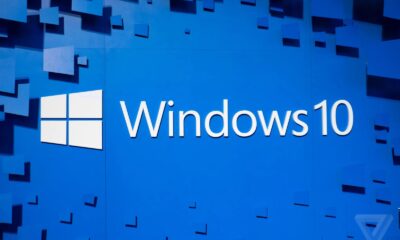Business
Windows 10 Users in South Africa Get a Reprieve with Free Extended Support

For millions of South Africans still clinging to Windows 10, the looming cut-off date has felt like the end of an era. Microsoft is officially ending standard support for the operating system on 14 October 2025, yet the tech giant has confirmed that users who cannot or do not want to make the leap to Windows 11 will not be left completely exposed.
What Happens After October
From mid-October, Windows 10 will stop receiving updates that fix bugs, add features or provide technical assistance. Without intervention, that would mean devices running the older system could become vulnerable to cyberattacks. But in recognition of just how many people are still using it, Microsoft has extended a lifeline: a year of free security updates through the Extended Security Updates (ESU) programme.
This move is especially relevant to South Africans. By August 2025, nearly 41 percent of Windows users in the country were still on Windows 10, a figure that underlines just how slow the migration to Windows 11 has been.
How to Stay Protected
Microsoft is giving three options to personal users who want to keep their Windows 10 machines secure. The first is completely free if you back up your PC’s settings, apps and credentials. The second is redeemable with 1,000 Microsoft Rewards points. The third is a once-off payment of about R550.
Users must be signed into a Microsoft account to enrol. Once enrolled, Windows automatically turns on sync features for apps and settings, but these can be switched off without affecting security coverage.
For businesses, extended support is available for up to three years, though unlike personal usage, this will come at a cost.
Why So Many Still Use Windows 10
Windows 10 was first launched more than a decade ago and became Microsoft’s most widely used operating system, powering over a billion devices at its peak. Even with Windows 11 available since 2021, many users have resisted the upgrade.
One of the biggest hurdles has been Windows 11’s strict hardware requirements, including the need for a Trusted Platform Module 2.0 chip, a feature only built into mainstream devices from around 2018. This means even some powerful older PCs, such as Intel i9s and AMD Threadrippers, cannot make the switch without new hardware.
What to Expect
The ESU programme will not provide any new features or cosmetic changes. It is strictly about security, ensuring that devices running Windows 10 are protected from vulnerabilities until October 2026.
For users who have grown attached to Windows 10’s familiar layout and who find Windows 11’s design tweaks, like the centred Start Menu, unwelcome, this extra year provides breathing room. For others, particularly those with older machines, it may be the difference between staying online safely and being forced to buy new equipment.
Either way, the decision shows Microsoft’s recognition of a loyal user base not quite ready to say goodbye to one of its most successful operating systems.
Also read: Microsoft ends Windows 10 updates this October: what it means for South Africans
Follow Joburg ETC on Facebook, Twitter, TikT
For more News in Johannesburg, visit joburgetc.com
Source: MyBroadband
Featured Image: iLink Digital

























